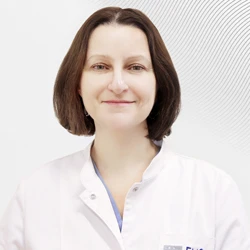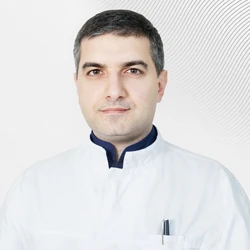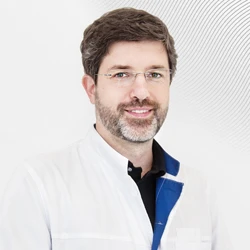To get an idea of what is happening in the intensive care unit, let's try to answer a few questions.
Who is being treated in intensive care?
The majority of patients in the intensive care unit in our clinic are patients after surgery. With simple surgical procedures, monitoring is carried out from half an hour to several hours, and only after making sure that the patient is fully awake after anesthesia, such important indicators as blood pressure, pulse, breathing are stable, and pain is not bothering him, the issue of transfer to a hospital ward is resolved.
After more complex operations, for example, hip replacement or major surgery on the stomach or intestines, the patient is observed and treated in intensive care for about a day or longer, until the condition is fully stabilized and vital functions are restored.
The most severe category is patients with combined injuries, multiple fractures, or serious health problems requiring temporary replacement of the function of various organs and systems. For example, patients with extremely severe pneumonia undergo mechanical ventilation, and patients with impaired renal function require renal replacement therapy, hemodialysis, or other methods of extrarenal blood purification. Patients with extensive heart attacks are given medications that support heart function in very precise dosages using special infusion pumps.
What do they do in the intensive care unit?
Looking at the equipment of the intensive care unit, the question involuntarily arises: is all this equipment really used? For example, let's look at the situation with a patient after a serious car accident. Chest contusion, rib fracture, lung injury – artificial ventilation is required until the chest regains its former frame and the hematomas and hemorrhages disappear in the lungs after impact. Modern devices allow for very precise selection of ventilation modes in order to maintain the patient's independent breathing, rather than completely replacing it. This provides comfort to the patient and facilitates the transition to independent breathing.
To monitor the work of the heart, a heart monitor is used – a device that records a cardiogram in a preset mode, measures blood pressure, pulse, and saturation (the oxygen content in the blood is measured using a beam of light through a nail). If necessary, the depth of the patient's sleep can be measured when the so–called drug sedation is used - artificial sleep. The technique of measuring the depth of sleep is widely used in the operating rooms of the European Medical Center, which makes it possible to tell the patient with confidence that the fear of "waking up during surgery" is unfounded.
Sometimes patients experience chills after surgery. In these situations, a fan heater is used, which blows warm air over the patient, and the tremor quickly disappears.
Some patients cannot eat for several days after a complex operation on the intestines or stomach. In these cases, the first days of nutrition are carried out intravenously with amino acid solutions, which are administered at a certain precisely calculated rate. As soon as the meal is allowed, feeding begins through the probe, or the patient drinks special nutritional mixtures for postoperative feeding on his own. We can monitor the adequacy of nutrition based on a number of tests performed by our laboratory at any time of the day or night.
In case of severe kidney diseases, we perform hemodialysis or various types of filtration with an artificial kidney device. Temporary replacement of a function makes it possible for a diseased organ to restore it after a certain period. In the photo you can see a hemodialysis session in a patient with renal insufficiency.
In some operations, to relieve pain in the postoperative period, we perform epidural anesthesia, when an anesthetic is constantly injected through a thin catheter connected to the nerve roots in the spine. This allows the patient to move freely and comfortably endure the first difficult days after surgery.Thus, the capabilities of our intensive care unit make it possible to successfully treat patients with various serious illnesses, qualified anesthesiologists, intensive care specialists and nurses do everything necessary for a speedy recovery of the patient.
Was this information helpful?
Questions and answers
Nonbacterial Prostatitis
For over a year now I have suffered with nonbacterial prostatitis. I am 65 years old and my prostate is 50 cubic cm. I have treated this every way possible to no avail. As I understand it, there are only 2 possibilities: 1) Daily painkillers and sleeping pills which leave me in a drug-induced stupor. 2) Radical
prostatectomy, although I don't have cancer and my PSA is around 1. I don't live in Russia and it isn't possible to have a radical prostatectomy here. Can I have this operation in your center? Because of the severe inflammation, I can only sit and walk for limited amounts of time. I am near insane from the constant pain and sleeplessness.
...more
As with all civilized urologists in the civilized world, we COMPLETELY remove the prostate ONLY in cases of prostate cancer. At the same time, if you would like to be seen by us for assistance, at your convenience we can examine you and treat your problem.
Both knees
I would like to get MRT and diagnosis for my knees. Left has old trauma and right is hurting now permanently. An English or German speaking doctor would be an advantage. KR Florian
Dear Florian. Be sure you'll get all the answers for your questions. We have MRI and English-speaking staff including knee surgery specialists. Our assistants will contact for further instructions. Kind regards.
Laser surgery for removal of varicose veins
Does you clinic offer laser surgery for removal (or correction) of varicose veins on the legs? I would like to learn about both the aesthetic and medical side of the issue.
Our clinic performs the most common and advanced methods of varicose veins’ treatment. This includes classic phlebectomy, injection sclerotherapy, and foam sclerotherapy (the most common method of treatment in Europe). The method of treatment depends on certain medical conditions. If the disease manifests itself as
small spider veins, the laser correction could be performed by a surgeon-phlebologist or a dermatologist. But each case is always individual. You need to make an appointment for a consultation to discuss all the issues in more detail.
...more
Cancer of the thoracic spine
I have cancer of the thoracic spine. According to the MRI, I have wedge-shaped vertebrae, and small fractures in some places, with the absence of normal bone. Is it possible to undergo a vertebroplasty if the lumbar region is also affected? Will the lumbar vertebrae be able to support the thoracic vertebrae after
this procedure?
...more
It is necessary to analyze the MRI scans in this case. Metastatic vertebral bodies are treated with radiation and chemotherapy according to our principles. Vertebroplasty is possible, but it is difficult to say anything specific without seeing the scans.
Hernia-related pain
Hello, I had hernia-related pain about one month ago. With abrupt leg and foot movements, I experience pain in the cervical segment of the spine, radiating into my arm. MRI test result: degenerative-dystrophic changes of the cervical segment, spondylosis, osteophytosis of C5-C6 segment, posterior hernia of C4-C5
segment with a tendency to sequestration. Could the hernia growth be stopped? What do I do?
...more If the MRI data shows a disk protrusion (small hernia) which does not cause dural sac compression and you have no clinical manifestations of the disease, you need to undergo physical therapy and therapeutic physical training aimed at strengthening the muscles of the cervical segment of the spine. In order to make the
decision, you must make an appointment and show the MRI results to a neurologist or neurosurgeon, who will give you recommendations for further action. You can get all necessary assistance at our center.
...more 







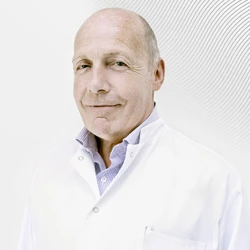
.webp)


.webp)
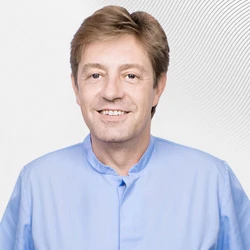
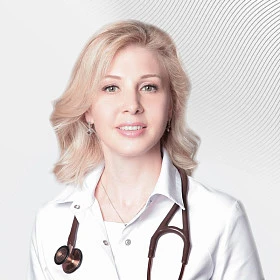
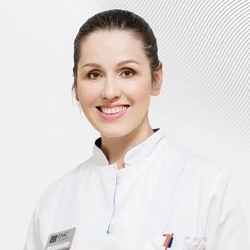
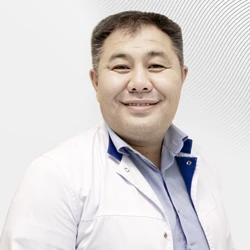
.webp)

.webp)

